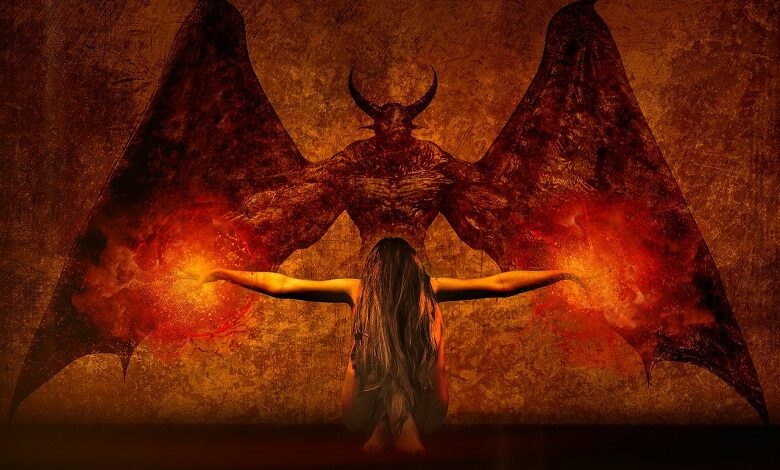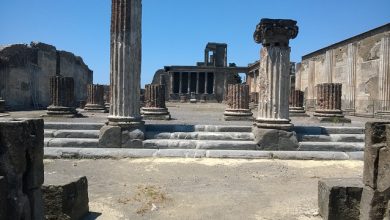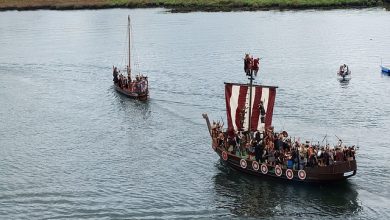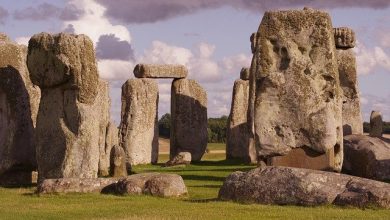Witches of Vardø: An Island without a man and “Capital of witches”

Witches exist everywhere, but on Christmas Eve 1617, a rough sea hit the small town in northern Norway, leaving only the women alive, an act of “sorcery” that condemned the alleged witches to the stake and went down in history as one of the first and largest witchcraft trials in Europe.
A small town in northern Norway, on Christmas Eve 1617, a terrible storm split the history of Vardø in two, that from then on would become known as the “Capital of the Witches”, as it was the epicentre of one of the most important trials of witchcraft in history, which led to the stake of 91 women, falsely accusing them of having caused the catastrophe that killed almost all the men of the town.
Before the storm, Vardø was a cold island of free natives who led a quiet and peaceful life. Most of the men in the village were fishermen, venturing into the icy waters to provide food for their homes. Women, for their part, stayed at home to care for children and the elderly, a traditional role arrangement anywhere in the world at that time.
But the night of the storm came, a fateful episode where more than 40 men died, who saw 10 of their fishing boats succumb to the raging waters. That changed everything because from one moment to the next, the women were totally deprived, without their husbands or older children, they had no guarantees to survive.
In the midst of this panorama, the figure of Kirsti Sørensdatter emerged, an independent woman who had built a more equal relationship with her husband. She knew how to fish and work the land, thanks to her husband’s teachings before he died in the storm.
It was she who took command of the ships that remained in Vardø, took over the work of the cattle, and the one who began to organize the women of the town in the different tasks of survival to escape their destiny of freezing to death of hunger. The irony is that having taken the reins of her life and refusing to die in the cold Nordic, she ended up condemning them all to the fire of the inquisitive bonfire.
The history of Vardø and its burkas is collected by Kiran Millwood Hargrave in her novel “The Island of Women”, where she describes this society of free women as an example of overcoming and tenacity, a feminist oasis in the 17th century that ended up being crushed by the fear of the witch hunters, who with torture and superstitions ended the lives of emancipated women.
Witchcraft in the medieval era
In medieval literature before Christianity, supernatural powers were an accepted fact. Magic, shapeshifting, flight, and spells were used to control the elements and conjure the dead. Ultimately, the church rejected these powers and prohibited any belief and use of “witchcraft”. However, belief and accusations are part of history, and during the seventeenth and eighteenth centuries, witch trials throughout Europe and part of America spread rapidly.
Two things make Vardø particular: the first is that in 1593 and 1692, there were more than 140 witch trials in that small town; the second is that the trials were recorded, which gave modern historians a great understanding of how witchcraft accusations and convictions were played out in trials. But it was not only the forced independence of their women that drew the attention of the witch hunters who looked suspiciously at Vardø, but also contributed several myths and superstitions that made the town a perfect target for inquisitive fires.
During the seventeenth century, the local authorities had a lot of power. Often men from Scotland, Denmark, and Germany set out to hunt witches. There was a prevailing theory in Europe that “evil could be found in the north”, a belief that people in that area were more inclined to be evil than in other parts of the world. Especially since the inhabitants of Finnmark (province of Norway to which Vardø belongs) did not profess Christianity but kept their ancestral traditions, and it was believed that Satan lived in those northern areas.
The “evil” was transmitted through the extremely cold winds from the north, whose relentless sounds and chilling howls were considered by Christian explorers as calls of the devil.
The Dutch also sailed between Vardøshus and Russia to trade and warned their compatriots of the dangers of Satan. Demons and devils lairs flew through the evil winds. Witches were given the powers to evoke powerful whirlwinds, bad weather, fog, thunder and lightning along the shoreline. A whole list of nautical wizardry that was special to Norwegian witches.
Word spread that Norway had the most notorious witches. There were stories that the Domen Mountain between the village of Vardø and Kiberg was the place where the Great Witches’ Saturdays were celebrated. There it was said that the very entrance to hell remained. Something that they ‘confirmed’ thanks to the confessions under torture of several of the accused women, who spoke of a long black valley and a dark lake at the bottom of the valley.
They said that Satan himself had thrown fire from an iron pipe by making previously frozen water boil. They told of men and women floating in the water and screeching like cats. Stories of devils and demons circulated throughout Europe, spreading from that Norwegian cave all over the world, causing winds, disease and brutal damage in their wake.
To all this was added the presence of the Sami in the region, an ancient Scandinavian indigenous people who refused to adopt Christianity and who were a favourite target of the King of Denmark in his evangelizing crusades.
The witch trials
In January 1621, three years after the storm that destroyed the men of Vardø, the Holy Inquisition arrived in the town and with it began the trials against the surviving women of the storm, as they were accused of having caused it through witchcraft.
The chronicles of historians say that Mari Jørgensdatter was interrogated under torture on January 21 and ended up confessing that Satan had come to her on Christmas night in 1620 to participate in a coven, but also that the witches were responsible for the great storm of 1617.
Mari confessed that the witches had tied a fishing line three times, spat it out and untied it, after which “the sea looked like ash, and the people died.” Another woman, Else, was arrested after being seen in the company of black cats and dogs and exposed to the ordeal of the water: if you floated when thrown into the water, you were considered a witch.
Anne Larsdatter claimed in confession under torture that the devil tied the witches’ tongues so that they could not cry or confess until they were exposed to the ordeal of water. She had also flown to a “witch’s Saturday” outside Vardø, where she saw all 40 people drown.
Mari and many others were convicted and burned at stake in that first round of interrogations. She, Anne, and many of the women who were questioned pointed to Kirsti Sørensdatter – who had taught them to get by without their husbands – as their leader.
Months later, Kristi, who was not in the village, returned to Vardø and was arrested and interrogated under torture. She ended up confessing that she had learned sorcery from an old woman. Kristi was burned alive at stake on April 28, 1621, a couple of months after ten other women were burned for witchcraft. She was the last victim of the great witchcraft trial of 1621.
Approximately 150 people were executed for witchcraft between 1621 and 1663. Of these, most were Norwegian women, and a few were Sami men.
The memory of the spark plugs
On June 23, 2011, Queen Sonja of Norway inaugurated the Steilneset monument to the witch trials victims in Vardø. The monument was made by Swiss architect Peter Zumthor and French-American artist Louise Bourgeois.
The monument was designed to attract visitors to an economically depressed but exceptionally beautiful area of Norway. The memorial is also part of the modern trend to apologize and atone for past injustices and give official recognition to victims. The monument stands on the same site that is believed to be the execution site of the 91 alleged witches.




